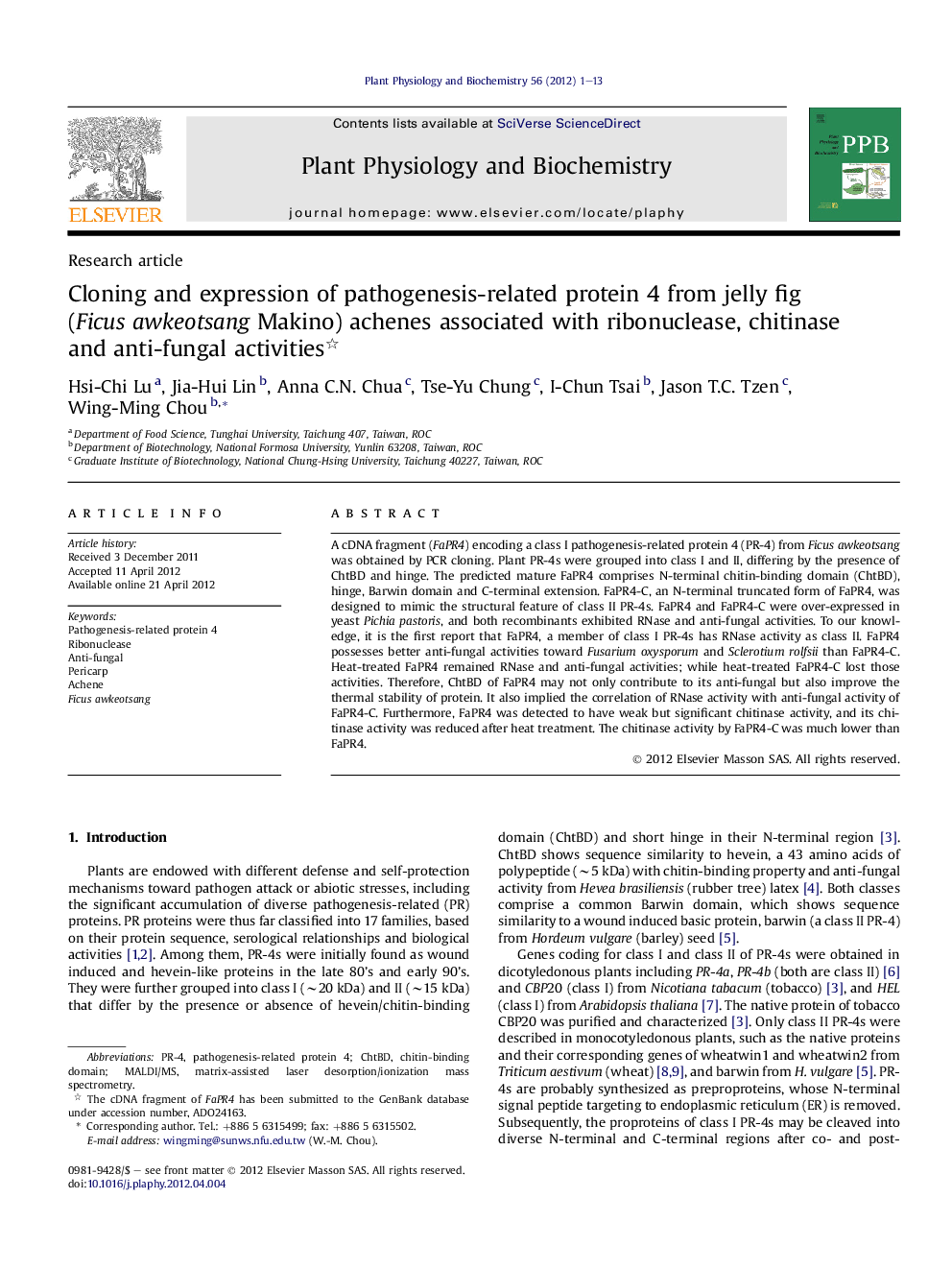| Article ID | Journal | Published Year | Pages | File Type |
|---|---|---|---|---|
| 2016248 | Plant Physiology and Biochemistry | 2012 | 13 Pages |
A cDNA fragment (FaPR4) encoding a class I pathogenesis-related protein 4 (PR-4) from Ficus awkeotsang was obtained by PCR cloning. Plant PR-4s were grouped into class I and II, differing by the presence of ChtBD and hinge. The predicted mature FaPR4 comprises N-terminal chitin-binding domain (ChtBD), hinge, Barwin domain and C-terminal extension. FaPR4-C, an N-terminal truncated form of FaPR4, was designed to mimic the structural feature of class II PR-4s. FaPR4 and FaPR4-C were over-expressed in yeast Pichia pastoris, and both recombinants exhibited RNase and anti-fungal activities. To our knowledge, it is the first report that FaPR4, a member of class I PR-4s has RNase activity as class II. FaPR4 possesses better anti-fungal activities toward Fusarium oxysporum and Sclerotium rolfsii than FaPR4-C. Heat-treated FaPR4 remained RNase and anti-fungal activities; while heat-treated FaPR4-C lost those activities. Therefore, ChtBD of FaPR4 may not only contribute to its anti-fungal but also improve the thermal stability of protein. It also implied the correlation of RNase activity with anti-fungal activity of FaPR4-C. Furthermore, FaPR4 was detected to have weak but significant chitinase activity, and its chitinase activity was reduced after heat treatment. The chitinase activity by FaPR4-C was much lower than FaPR4.
► FaPR4 coding for a class I PR-4 from jelly fig achenes was obtained by PCR. ► FaPR4 and FaPR4-C represent class I and II PR-4, each were expressed in yeast. ► FaPR4, heat-treated FaPR4 and FaPR4-C showed RNAase activity. ► FaPR4, heat-treated FaPR4 and FaPR4-C exhibited anti-fungal activity. ► First report indicates that a class I PR-4 has RNase activity.
